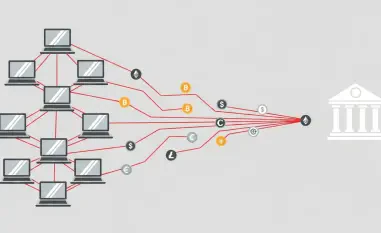The landscape of cybersecurity consistently evolves as cybercrime becomes more sophisticated, with ransomware threats posing significant challenges. One of the latest innovations leveraging artificial intelligence (AI) technology is AI-powered ransomware negotiations, which represent a milestone in the cybersecurity sector. This review delves into the innovation of AI chatbots and their role in automating ransomware negotiations, exploring their features, performance metrics, and implications for the broader cybersecurity landscape. The current capabilities and future possibilities presented by this technology provide an intriguing insight into how ransomware dynamics are shifting.
Exploring AI-Powered Negotiations
Artificial intelligence has found a niche in ransomware negotiations, revolutionizing how attackers and victims interact. The core principle involves AI chatbots automating the negotiation process, often applying psychological pressure on victims to accelerate compliance. Spearheaded by threat actors, this technology has emerged as a formidable tool within the cybercrime domain. Its relevance in today’s cybercrime landscape is highlighted by its ability to streamline operations across different time zones, languages, and organizational profiles, thereby expanding the reach and efficiency of ransomware operations.
Core Components and Key Attributes
AI-Based Negotiation Automation
At the forefront of AI-powered ransomware negotiations is the automation facilitated by AI chatbots. These bots autonomously engage victims, allowing ransomware groups to maintain a continuous negotiation process unaffected by human limitations. By automating communication, AI chatbots reduce the workload on affiliates while achieving high engagement efficiency. The AI components leverage sophisticated algorithms to simulate realistic interactions, thereby deepening psychological tactics used during negotiations. These features emphasize the system’s significance in modern ransomware approaches.
Dual-Portal Model in Data Leaks
A dual-portal system stands as a pivotal element of a double-extortion strategy exploited by ransomware groups like GLOBAL GROUP. This model redirects victims to a Tor-based data leak site and a negotiation panel, aptly segmenting the negotiation and data exposure processes. A secure channel for communication, coupled with user-friendly interfaces, ensures non-technical victims can navigate ransom payment and verification procedures. Real-world applications of this model reveal its adeptness in escalating threats related to data publication, hence offering a nuanced perspective on its technical aspects and performance characteristics.
Innovations and Current Trends
The ransomware ecosystem has witnessed several innovations, with AI becoming instrumental in transforming negotiation dynamics. Secure communication channels have emerged, protecting negotiation integrity while ensuring confidentiality. Meanwhile, escalating strategies that increase psychological pressure have gained preference, providing a more persuasive negotiation stance. These advancements indicate a trend toward more sophisticated attack methodologies, reflecting the importance of continuous innovation in an industry frequently confronted by evolving threats.
Practical Deployments and Implementation
AI-powered negotiation technology has found diverse applications across different sectors, showcasing flexibility in deployment. Industries susceptible to ransomware are integrating AI technology to automate threat handling, achieving significant reductions in response time and human resource dependency. Notable implementations include healthcare, finance, and manufacturing sectors, where sensitive data is targeted. These sectors benefit from using AI chatbots as an initial line of defense, reflecting the utility of these technologies in real-world scenarios.
Limitations and Obstacles
Despite its benefits, AI-powered ransomware negotiation systems face numerous challenges. Technical hurdles, such as operational security failures and infrastructure vulnerabilities, compromise system effectiveness. Regulatory issues also pose obstacles, as discussions continue around AI ethics and legality within cybercrime contexts. Market obstacles further hinder widespread adoption, though ongoing developments aim to address these challenges, paving the way for enhanced performance and broader acceptance of AI technologies in cybersecurity.
Future Outlook and Breakthrough Potential
Forecasts for AI-powered ransomware negotiations indicate promising advancements and breakthroughs. Continuous improvements in AI capabilities suggest scenarios where negotiations become increasingly persuasive and resilient. Future developments may focus on refining chatbot algorithms for more nuanced interactions and integrating advanced threat intelligence systems to preemptively counteract ransomware attacks. The anticipated long-term impact remains a focal subject, with predictions leaning toward substantial transformations in cybersecurity practices.
Summative Insights and Implications
This analysis underscores the transformative potential of AI-powered ransomware negotiations, reflecting substantial progress in cybersecurity threat management. While there are significant advantages, challenges persist that require strategic solutions. Nonetheless, the technology presents a credible opportunity to redefine engagement processes in ransomware incidences. Future advancements hold the promise of further enhancing negotiation systems, potentially revolutionizing interactions between attackers and victims and contributing positively to the cybersecurity industry.













